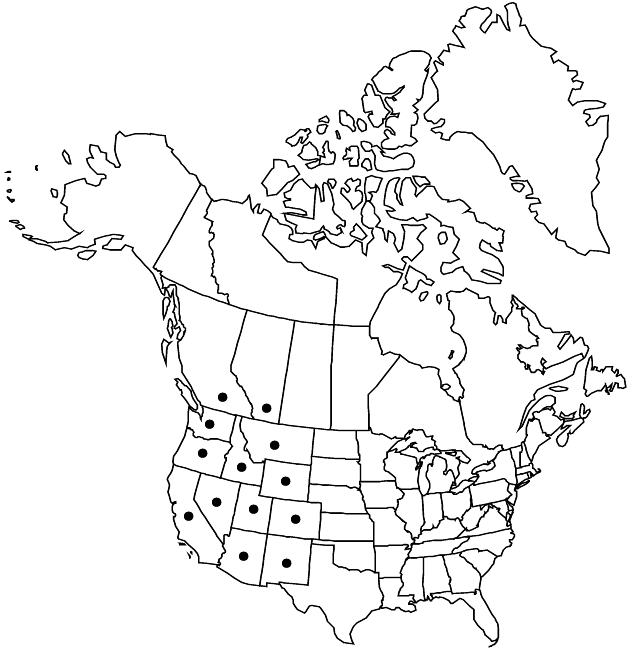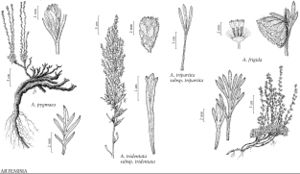Artemisia tridentata subsp. tridentata
Shrubs, 100–200 (–300) cm. Vegetative branches nearly equaling flowering branches. Leaves cuneate or lanceolate, 0.5–1.2 (–2.5) × 0.2–0.3 (–0.6) cm, 3-lobed (lobes to 1/3 lengths of blades, rounded). Heads in paniculiform arrays 5–15 (–20) × (1.5–) 5–6 cm. Involucres 1.5–2.5 × 1–2 mm. Florets 4–6. Cypselae glabrous. 2n = 18, 36.
Phenology: Flowering mid summer–late fall.
Habitat: Deep, well-drained (usually sandy) soils in valley bottoms, lower montane slopes, along drainages
Elevation: 1300–2200 m
Distribution

Alta., B.C., Ariz., Calif., Colo., Idaho, Mont., Nev., N.Mex., Oreg., Utah, Wash., Wyo.
Discussion
Subspecies tridentata is the common sagebrush of deep, well-drained soils in the Great Basin of western North America, where it is often the dominant shrub of valleys and open grasslands. On drier sites and on high plateaus, it is replaced by subsp. wyomingensis, a taxon that appears to be increasing with prolonged droughts and disturbance from grazing. In dry valley bottoms of the Great Basin, subsp. tridentata is conspicuous by its great height and wide arrays of heads along roadways, fencerows, and other areas where moisture is more readily available through runoff or reduced competition.
Selected References
None.
